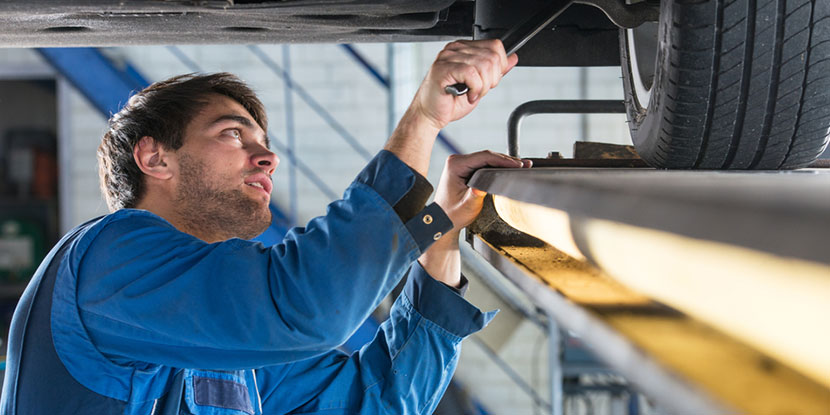10 Tips to Pass Your MOT Test

If you own an automobile, you know an MOT test is required yearly to ensure your vehicle is roadworthy. If your car fails the MOT, you will not be able to drive your vehicle on the roads. This blog post will provide ten tips to help you pass your MOT test with flying colours!
If your automobile is over three years old, you must have an annual MOT test to ensure it is safe and roadworthy. Most of us see this as an inconvenience, but these tests are vital in keeping us safe. Simple car maintenance items, such as ensuring your washer fluid is filled, can save you from having to retake your MOT. Avoid the headache and added expense- keep up with small fixes!
What Is MOT Test?
An MOT test is annual vehicle safety and roadworthiness test for cars over three years old. It is a legal requirement for all car owners in the UK, and if your vehicle fails its annual MOT, you will not be able to get your car on the roads.
The government-recommended price for an MOT test is £54.85, but you can often find them cheaper if you look around–between £25 and £50. businesses put these prices out there to attract customers; in any case, most of us see this as a slight financial inconvenience. Although the MOT test may seem like it’s draining your bank account, it’s important to remember that it tests your car’s safety features to ensure they’re still working properly. It can also reveal problems with the car that could become much more expensive down the road!
This is why car owners must be proactive and understand what is being checked during the MOT test. This way, you can avoid nasty surprises and, more importantly, keep yourself and other road users safe. Our MOT check will be able to provide detailed insights and a full history on any vehicles MOT status.
Our Ten Tips To Make Sure You Pass Your MOT
Although the likelihood of passing your car’s MOT test is only 60%, you can improve your chances by conducting standard checks on your vehicle beforehand. These tips will help you avoid the most common failures.
1. Check your car’s tyre tread and pressure regularly
The legal minimum tread depth is 1.6mm, but we recommend changing your tyres when they get down to 3mm. You can check your tread depth using a 20p coin- if the coin’s outer band is visible when inserted into the tread, your tyres need to be changed. You can check your tyre pressure using a simple hand-held pressure gauge, which you can pick up at most petrol stations.
2. Make sure all your car’s lights are in working order
Almost a third of cars fail their MOT tests due to faulty bulbs. Yet this is one of the easiest things to check on your car. This includes your headlights, brake lights, fog lights, and indicators. It is easy to forget about our car’s lights, but they are crucial for you and other road users to see and be seen.
3. Keep your windscreen clean and clear
Your windscreen should have no cracks or chips larger than 10mm. If you have any damage, repair it as soon as possible- a chip can quickly turn into a crack. You should also ensure your vehicle’s windscreen wipers are in good condition and have enough washer fluid in your car. A dirty or damaged windscreen can obstruct your view, which is dangerous for you and other road users.
4. Check and top up your car’s fluids
This includes engine oil, power steering fluid, brake fluid, and coolant. It is important to check your car’s fluid levels as they can drop quickly and lead to serious issues. You should also check for leaks- even a small leak can cause big problems.
5. Check your car’s brakes
This includes the pads, discs, and shoes. Ensure that they are not damaged. Check the brake fluid level and look for leaks. Ensure your brakes are in good condition.
6. Check your car’s number plate
The letters and numbers on your number plate must be visible and legible. If you’re not legible, you’ll fail your MOT. This is an easy fix-cleaning your number plate with soapy water or replacement. Ensure the font is legible and the letter spacing complies with UK regulations.
7. Check your car’s seats and seatbelts
All seats and seatbelts, including the driver’s seat, passenger seats, and rear seats, must be in working condition. The seatbelts should not damage or fray and must be able to click shut securely. To check your seat belts’ functionality, give them a sharp tug–this simulates hard braking. Additionally, ensure that none of the seat belts is frayed before getting on the road again.
8. Check your car’s horn
You will automatically fail your MOT if your car’s horn is less than clear. This is an easy fix- replace the horn if necessary. With a quick push on the horn, there should be an emitted warning loud enough to be heard by anyone else on the road. Ensure that yours meets traffic requirements, as twin tone and musical horns, sirens and bells are not allowed per regulation.
9. Check your car’s mirrors
All car mirrors, including the rearview mirror and side mirrors, should be unobstructed, free from cracks or damage, and securely attached to the car. The driver’s seat must have a clear view of an interior rearview mirror and a driver’s side mirror. This is important for your safety, as you need to be able to see other vehicles on the road.
10. Check your previous MOT certificates
Lastly, bring your car’s previous MOT certificates to the test. These may help prevent previous advisories or recommendations from failing this year. If you’re unsure about what an advisory means, call up and ask the mechanic that did your vehicle’s MOT test last year.
We hope this blog post helped clarify what you need to do to pass your MOT test! If you have any questions or concerns, feel free to contact us. Good luck!






